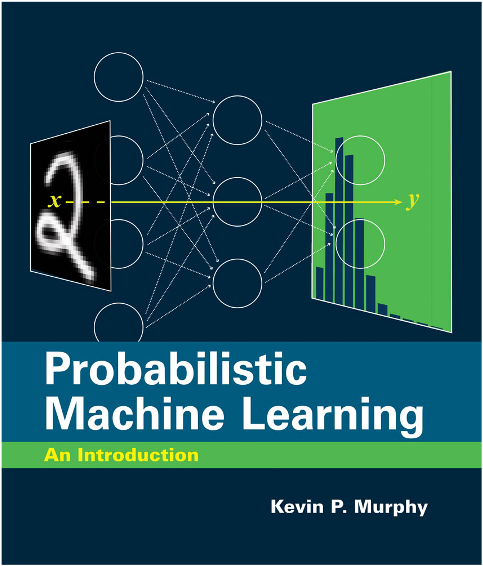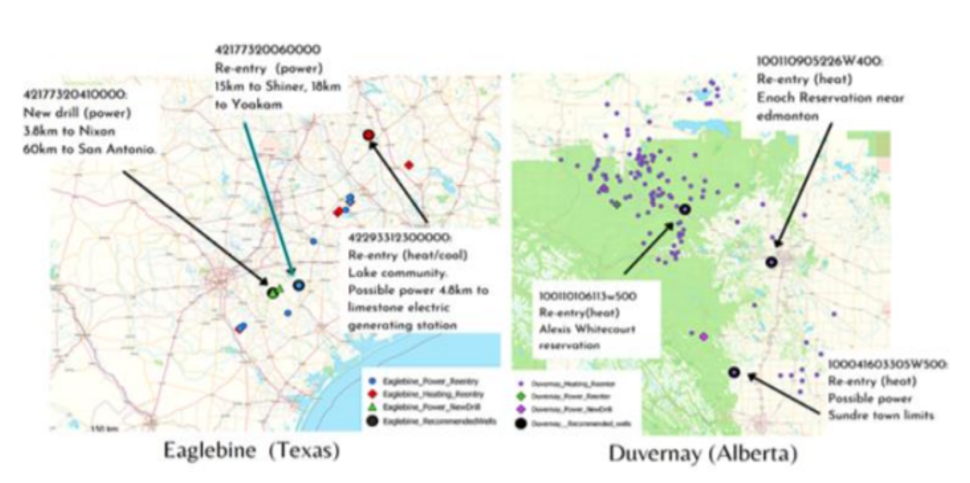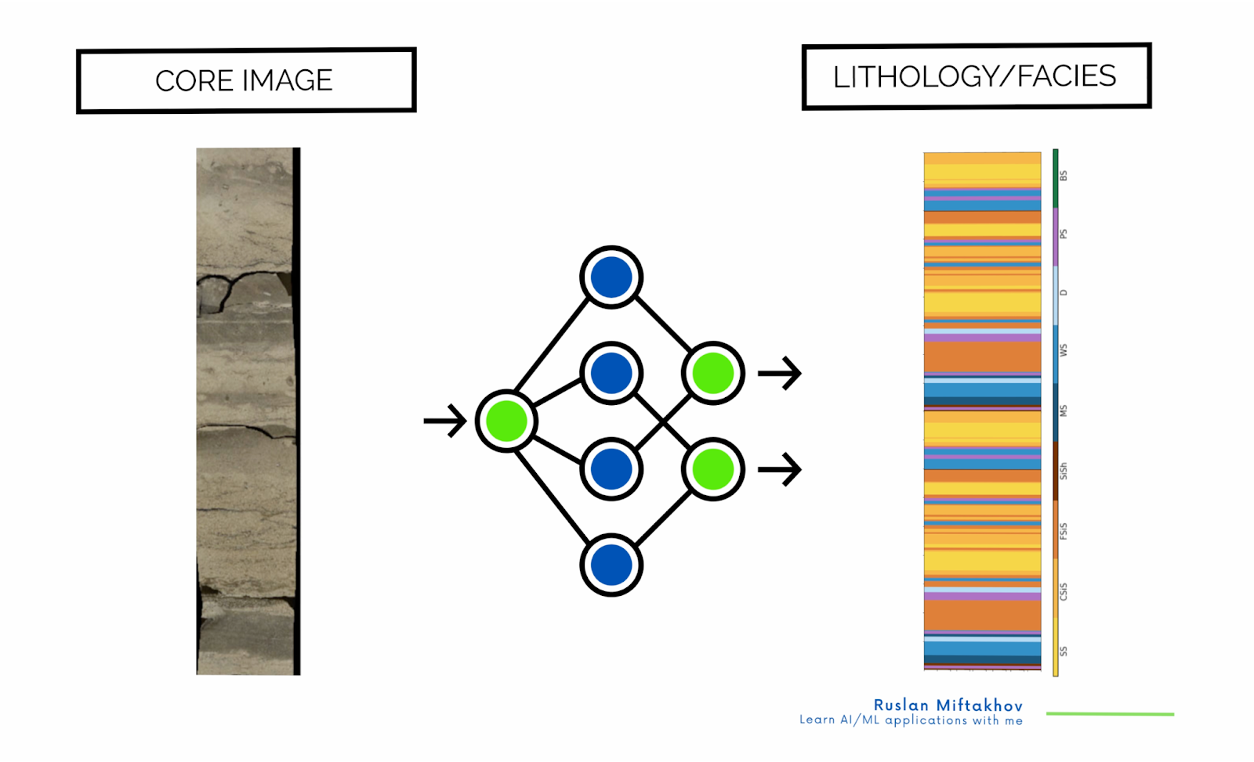Welcome to the third newsletter prepared by the EAGE A.I. Committee this year. As a group of EAGE members and volunteers they help you navigate the digital world and find the bits that are most relevant to geoscientists.
You are welcome to join EAGE or renew your membership to support the work of the EAGE A.I. Community and access all the benefits offered by the Association.
EAGE Membership Benefits: Join or Renew
Curious to know all EAGE is doing for the digital transformation?
Visit the EAGE Digitalization Hub
![]()
![]() What: Probabilistic Machine Learning by Kevin Murphy.
What: Probabilistic Machine Learning by Kevin Murphy.
Probabilistic Machine Learning covers all aspects required to understand the technical and practical details of modern and classical machine learning. The content of the book has a strong section on probability theory and linear algebra – fundamental concepts to understand and build modern machine learning applications.

Beyond the fundamentals, the author also provides extensive insights and explanations to recent advances in supervised and unsupervised (deep) learning. This book is potentially the most comprehensive work on the topic of machine learning available today.
![]() Why this is useful: The book allows practitioners and newcomers to the field of machine learning to get a deep understanding of the underlying theory of machine learning. Furthermore, it serves as an excellent reference on machine learning algorithms.
Why this is useful: The book allows practitioners and newcomers to the field of machine learning to get a deep understanding of the underlying theory of machine learning. Furthermore, it serves as an excellent reference on machine learning algorithms.
The book covers everything from traditional machine learning algorithms such as random forests to modern natural language processing, and graph neural networks.
The accompanying code allows one to dive straight into the material and is provided as a Google Colab link so as to start working with an implementation right away in your browser.
Image source: Probabilistic Machine Learning: An Introduction
![]()
![]() What: Machine Learning for Fusion Reactor Control
What: Machine Learning for Fusion Reactor Control
Researchers at the Swiss Plasma Center at EPFL Lausanne in collaboration with Google DeepMind have incorporated machine learning models into real-world fusion reactor experiments. They integrate a neural network trained on simulations
with the actual reactor hardware. A key challenge in fusion research is long-term plasma stability. They show that their models can generate longer fusion sequences in actual fusion experiments. The neural networks find new plasma configurations that have previously not been considered.
![]() Why this is useful: The research highlights advances in the field of physics in combination with machine learning that allows novel insights and experimental results to be obtained previously not possible. As such this work can serve as an example to learn which methods and how these methods are put into practice for a real-world large scale scientific experiment.
Why this is useful: The research highlights advances in the field of physics in combination with machine learning that allows novel insights and experimental results to be obtained previously not possible. As such this work can serve as an example to learn which methods and how these methods are put into practice for a real-world large scale scientific experiment.

Image source: Degrave, J., Felici, F., Buchli, J. et al. Magnetic control of tokamak plasmas through deep reinforcement learning. Nature 602, 414–419 (2022).
![]()
![]() What: Andrew Ng: Unbiggen AI. The AI pioneer was involved in the rise of massive deep learning models trained on vast amounts of data, but now he’s preaching small-data solutions. In a recent interview published on IEEE Spectrum, he says it’s time for smart-sized, “data-centric” solutions to big issues.
What: Andrew Ng: Unbiggen AI. The AI pioneer was involved in the rise of massive deep learning models trained on vast amounts of data, but now he’s preaching small-data solutions. In a recent interview published on IEEE Spectrum, he says it’s time for smart-sized, “data-centric” solutions to big issues.
![]() Why this is useful: Over the last decade, deep learning networks have improved significantly, to the point where for a lot of applications the code — the neural network architecture — is basically a solved problem. So for many practical applications, it’s now more productive to hold the neural network architecture fixed, and instead find ways to improve the data. The data-centric movement can yield “small data” solutions to big issues in AI, including model efficiency, accuracy, and bias.
Why this is useful: Over the last decade, deep learning networks have improved significantly, to the point where for a lot of applications the code — the neural network architecture — is basically a solved problem. So for many practical applications, it’s now more productive to hold the neural network architecture fixed, and instead find ways to improve the data. The data-centric movement can yield “small data” solutions to big issues in AI, including model efficiency, accuracy, and bias.
 In many industries where giant data sets simply don’t exists, I think the focus has to shift from big data to good data. Having 50 thoughtfully engineered examples can be sufficient to explain the neural network what you want it to learn.
In many industries where giant data sets simply don’t exists, I think the focus has to shift from big data to good data. Having 50 thoughtfully engineered examples can be sufficient to explain the neural network what you want it to learn.
– Andrew Ng, CEO & Founder, Landing AI
![]()
![]() What: Geothermal Experience Datathon 2021 – SPE Untapped. In mid-2021 a “datathon” was held to examine how to repurpose oil wells for geothermal energy production. Different teams worked together to analyze how to “prospect” for existing oil wells that could be repurposed. The event was a datathon – instead of a hackathon, because it was centred around each team using the same dataset to solve the same challenge. Of course, data is never complete in the way you’d like and a lot of the data is missing or unavailable for these onshore wells. One team including Nabeel Muhammedy used machine learning to predict the bottom hole temperature from a variety of well data to indicate old wells with possible best heat flow.
What: Geothermal Experience Datathon 2021 – SPE Untapped. In mid-2021 a “datathon” was held to examine how to repurpose oil wells for geothermal energy production. Different teams worked together to analyze how to “prospect” for existing oil wells that could be repurposed. The event was a datathon – instead of a hackathon, because it was centred around each team using the same dataset to solve the same challenge. Of course, data is never complete in the way you’d like and a lot of the data is missing or unavailable for these onshore wells. One team including Nabeel Muhammedy used machine learning to predict the bottom hole temperature from a variety of well data to indicate old wells with possible best heat flow.
![]() Why this is useful: Energy needs are becoming more and more of a concern and community events like this datathon are one way to try and ideate around solutions. Teams are quite diverse which lends itself to creative thinking – but the teams also approach the problems with new technology solutions for the industry – in this case, machine learning approaches. The code and work from this datathon are available and thus allow anyone to pick up on the ideas and continue to work on them.
Why this is useful: Energy needs are becoming more and more of a concern and community events like this datathon are one way to try and ideate around solutions. Teams are quite diverse which lends itself to creative thinking – but the teams also approach the problems with new technology solutions for the industry – in this case, machine learning approaches. The code and work from this datathon are available and thus allow anyone to pick up on the ideas and continue to work on them.

Credit: Muhammedy et al.
![]()
![]() What: Centimeter-Scale Lithology and Facies Prediction in Cored Wells Using Machine Learning.
What: Centimeter-Scale Lithology and Facies Prediction in Cored Wells Using Machine Learning.
Researchers from the Colorado School of Mines propose unlocking warehouses full of high-resolution data by utilizing Machine Learning methods for automatic Lithology and Facies prediction for core data.
![]() Why this is useful:
Why this is useful:  Traditional well-log data cannot resolve fine-scale below 5-centimetre changes in lithology, preventing well-log data from fully characterizing the subsurface. Alternatively, the core is true to geologic-scale and heterogeneity and assists in resolving fine-scale changes in lithology. The geologic core, primarily gathered during drilling for hydrocarbon exploration and development, is costly to collect and store and is typically underutilized due to its analogue nature. The outputs of the proposed workflow are all digital, so they can be used for reservoir model parameterization, basin-wide mapping of cored lithology, and other applications where fine-grained information would open new insight into the subsurface. The code for this study and all notebooks with experiments have been uploaded to GitHub.
Traditional well-log data cannot resolve fine-scale below 5-centimetre changes in lithology, preventing well-log data from fully characterizing the subsurface. Alternatively, the core is true to geologic-scale and heterogeneity and assists in resolving fine-scale changes in lithology. The geologic core, primarily gathered during drilling for hydrocarbon exploration and development, is costly to collect and store and is typically underutilized due to its analogue nature. The outputs of the proposed workflow are all digital, so they can be used for reservoir model parameterization, basin-wide mapping of cored lithology, and other applications where fine-grained information would open new insight into the subsurface. The code for this study and all notebooks with experiments have been uploaded to GitHub.
Paper review on YouTube and image source.
![]()
Discover EAGE Learning Resources on A.I. and machine learning
This newsletter is edited by the EAGE A.I. Committee.
| Name | Company / Institution | Country |
|---|---|---|
| Anna Dubovik | WAIW | United Arab Emirates |
| Jan H. van de Mortel | Independent | Netherlands |
| Jing Sun | TU Delft | Netherlands |
| Julio Cárdenas | Géolithe | France |
| George Ghon | Capgemini | Norway |
| Lukas Mosser | Aker BP | Norway |
| Oleg Ovcharenko | NVIDIA | United Arab Emirates |
| Nicole Grobys | DGMK | Germany |
| Roderick Perez | OMV | Austria |
| Surender Manral | Schlumberger | Norway |
| Yohanes Nuwara | Aker BP | Norway |






